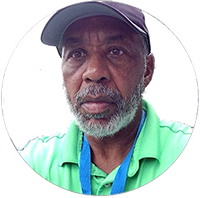Here we go again. Golf’s hierarchy and powers to be, doing what they do best. Creating and describing the world as they see it. Heading down that old too familiar road, where, i.e. ‘Columbus discovers America’ all over again.
According to pinehurst.com, building on their longstanding partnership and shared passion to elevate the stories of golf’s legends, the USGA and the World Golf Hall of Fame will create a new visitor experience at the USGA’s Golf House Pinehurst campus, opening in 2024. In doing so, the Hall of Fame will relocate its physical presence on display from St. Augustine to North Carolina.
The big question I ask is, will that visitor experience include the historic artifacts of African American golfers?
“For nearly 50 years, the Hall of Fame has honored the history and legacies of those who have made golf great,” said Greg McLaughlin, CEO, World Golf Hall of Fame. “Much like the USGA, the Hall of Fame is committed to connecting with fans around the world to highlight the greatest moments and legends of the sport. This expanded partnership will create an exciting new opportunity in Pinehurst – where the Hall of Fame originated – to celebrate Hall of Fame members and their contributions to golf.”
“I’m confident today’s announcement and alignment with the USGA will further cement the long-term relevance and viability of the World Golf Hall of Fame, all while continuing to honor golf’s most storied individuals and artifacts,” said Jay Monahan, Commissioner of the PGA TOUR and Chairman, World Golf Foundation. “Both organizations are committed to prioritizing the preservation of golf history, which will serve fans well in the years to come.”
According to pinehurst.com, artifacts from Hall of Fame inductees to be displayed in Pinehurst include:
- Johnny Miller’s clubs, ball and champion’s gold medal from the 1973 U.S. Open at Oakmont, where he shot a then-record 63 in the final round
- Shirt worn by Annika Sorenstam in the first round of the 2003 Colonial, becoming the first woman to play in a PGA Tour event since 1945
- Compass, slide rule and bifocals used by Donald Ross
- Jack Nicklaus’ MacGregor golf bag from the 1965 Masters
- Golf bag and clubs used by Lorena Ochoa to win the 2008 British Women’s Open, her first major victory
- Spalding 2-wood used by Bob Jones
- Wedge used by Seve Ballesteros to win the 1979 Open Championship at Royal Lytham & St. Annes, his first of five major titles
- 1922 PGA Championship trophy and 1935 Masters champion plaque from Gene Sarazen, the first player to complete the professional career Grand Slam
WHAT ABOUT AFRICAN AMERICAN GOLFERS?
What artifacts, if any, will we see of African Americans as part of the new visitor experience at the USGA’s Golf House Pinehurst campus?
What about John Shippen’s handmade putter?
What about Charlie Sifford’s (1961) PGA card, or clubs he used to win the (1969) L A Open? Sifford is a North Carolina native, born and raised not that far from Pinehurst.
What about the great Michael Jordan? Jordan grew up not too far from Pinehurst and is the current owner of the Charlotte Bobcats Basketball Team, is a golf addict, and an Ambassador of the sport.
What about Carolina College grads and Hall Of Famers such as Davis Love III (University of North Carolina), Arnold Palmer, Raymond Floyd, Lanny Watkins (Wake Forest University), and Michael Jordan also (University of North Carolina), and former PGA star Curtis Strange, also a Wake Forest University alumni.
What about former PGA and Senior PGA member Jim Thorpe who grew up in Roxboro, N.C.
What about current PGA Tour golfer Harold Varner III who is from Gastonia, N.C. neighborhood.
The North & South Amateur Tournament for men began on April 1, 1901, on Pinehurst No. 1.
Also, The North & South Women’s Amateur Tournament began in 1903, on Pinehurst No. 1 & No. 3. The two Championships are the longest consecutive running Championships in the country. If St. Andrews in Scotland, the home of golf, then Pinehurst in North Carolina, is the home away from home—the next best choice.
It’s no well-kept secret that North Carolina is rich in golf history and representation. Quiet as it’s kept, I grew up a “Tarheel” resident and honed my golfing skills on “Tobacco Road” in little Henderson, N.C.
Necessity was the mother of invention, in my world back then you either caddied, picked cotton, or primed tobacco. Caddying won out, by a landslide. I’m no longer a single-digit player at the moment, but my game is still respectful.
When I think back to playing amongst them Carolina Pines, I pride myself on the fact that to this day, my drives usually find the fairways.
John Perry is a freelance writer, poet, and active golfer with a passion for calling shots like he sees them—and then, telling it like it is. He resides in Orlando, Florida.


